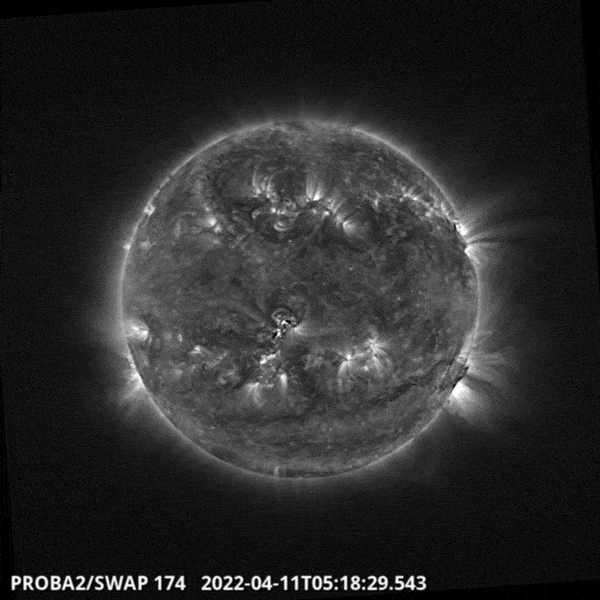Science
Related: About this forum'Dead sunspot' launches ball of plasma toward Earth
By Stephanie Pappas
published about 5 hours ago
It's expected to hit April 14, when you can expect more intense aurora.

The "corpse" of a sunspot exploded Monday (April 11), triggering a mass ejection of solar material that is headed in Earth's direction.
The explosion comes courtesy of a dead sunspot called AR2987, according to SpaceWeather.com(opens in new tab). The sunspot explosion released loads of energy in the form of radiation, which also led to a coronal mass ejection (CME) — explosive balls of solar material — both of which could spur more intense northern lights in Earth's upper atmosphere. The material in that CME is likely to impact Earth on April 14, according to SpaceWeather.
Sunspots are dark regions on the surface of the sun. They are caused by intense magnetic flux from the sun's interior, according to the Space Weather Prediction Center(opens in new tab). These spots are temporary and can last anywhere from hours to months. The idea of a "dead" sunspot is more poetic than scientific, said Philip Judge, a solar physicist at the High Altitude Observatory at the National Center for Atmospheric Research (NCAR), but the convection of the sun breaks these spots apart, leaving in their wake magnetically-disturbed bits of quiet solar surface.
"Occasionally," Judge wrote Live Science in an email, "sunspots can 'restart,' with more magnetism appearing later (days, weeks) at the same region, as if a weakness was made in the convection zone, or as if there is an unstable region under the surface that is particularly good at generating magnetic fields beneath."
More:
https://www.livescience.com/dead-sunspot-coronal-mass-ejection-toward-earth?utm_source=notification
AllaN01Bear
(22,981 posts)dweller
(24,898 posts)
✌🏻